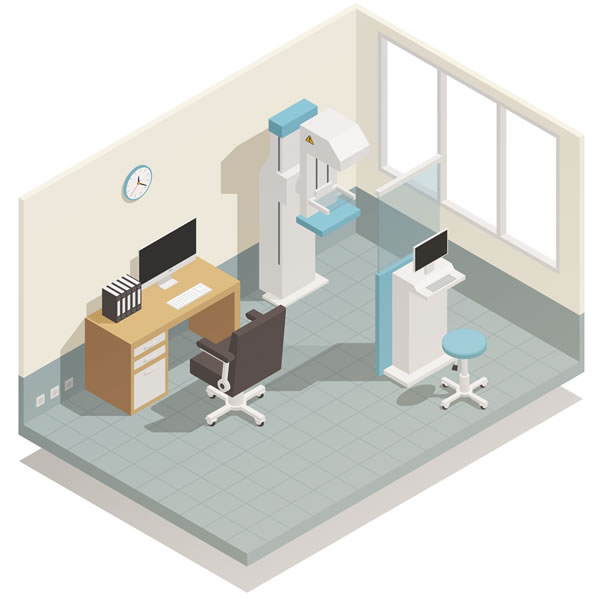What are the advantages
of mammography?
In simple words, mammography is an 'X ray' of the breast. Different normal tissues of the breast and different tumours, will reflect these rays differently, giving rise to depth of white colour on the X ray. To understand mammography, let us first understand, what is a 'normal breast'.
Breast is made up of two types of cells - one is the 'milk system' (glandular tissue) containing the 'lobular' cells (which secrete milk) and 'ducts' (which transport milk towards nipple) and the other is the 'supporting fat' (fatty tissue) which contains blood vessels and lymphatics and other things to supply to these lobular cells and duct and provide nutrition to those cells and keep them healthy. There is no such thing as a 'standard' breast. The variation in size of breasts in different women is due to different proportions of fatty and glandular tissue. What is normal for one woman may not be for another. A mammography 'film' is like an Xray - black and white. Active glandular tissue is 'dense' and appears all 'white' on the mammogram whereas the fatty tissue is 'much less dense' and usually appear 'greyish' on the mammogram. Tumours in the breast - cancerous or non cancerous - usually appear white, and can be seen clearly against the grey of 'less dense' tissue, but not so easily against the white of a 'desne' tissue. Throughout a woman's life, the breasts will change; these are due to hormonal changes taking place in every woman's monthly cycle. Below are some descriptions of a normal breast at different stages of a woman's life:
Reproductive Period (15 to 45 or 50 years or so): Normal breasts feel different at different times of the month. The milk-producing tissue in the breast becomes active in the days before a period starts. In some women, the breasts at this time feel tender and lumpy, especially near the armpits. The breast is usually 'dense' in this period and mammograms will not easily pick up tumours and calcium spots. It is for this reason that 'screening' mammography is not advised below 40 years of age except in certain situations.
Post Menopausal: Activity in the milk-producing tissue stops. Breasts normally feel soft, less firm and not lumpy. The breasts may sag down a bit due to decrease in milk producing glandular tissue and increase in fatty tissue. The breast is much less dense now, and mammogram has high chances of picking up tumours and calcium spots.
Hormone Replacement Therapy (HRT): Some women have to resort to hormone replacement therapy after menopause due to post menopausal symptoms. As a result of the hormones, the milk producing tissue in breasts remain active. Hence the breasts appear dense on mammograms.
